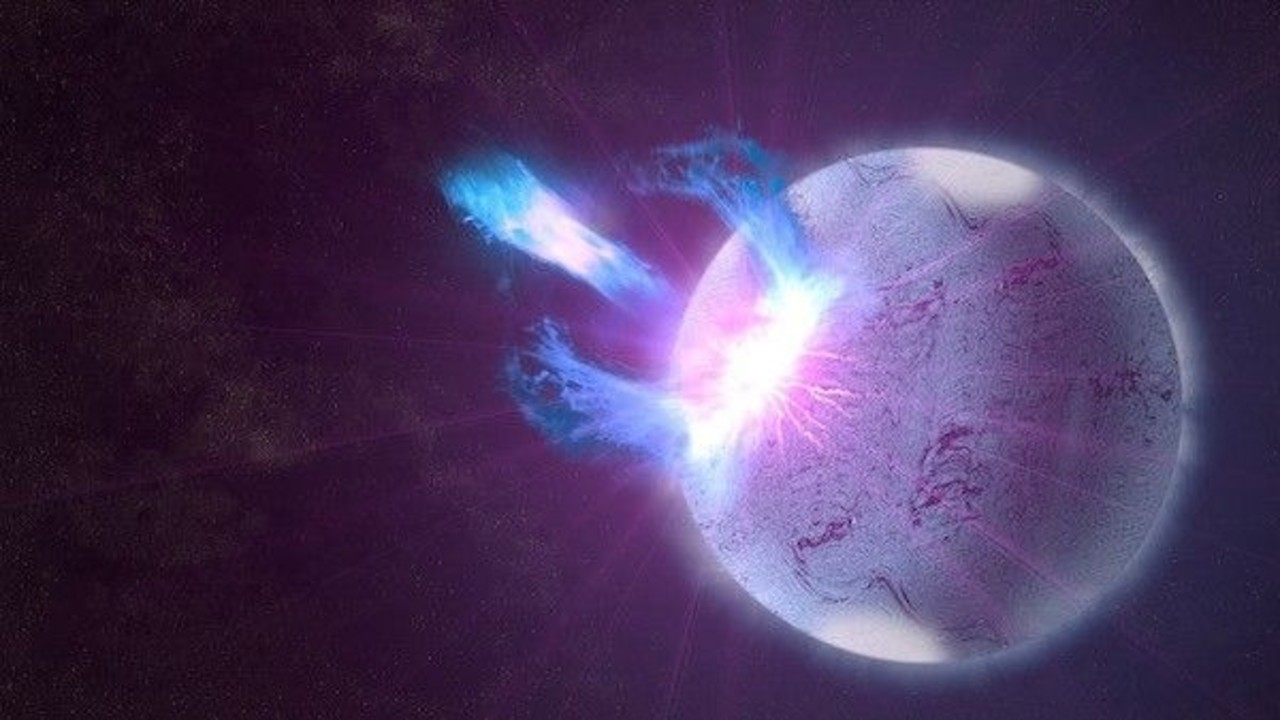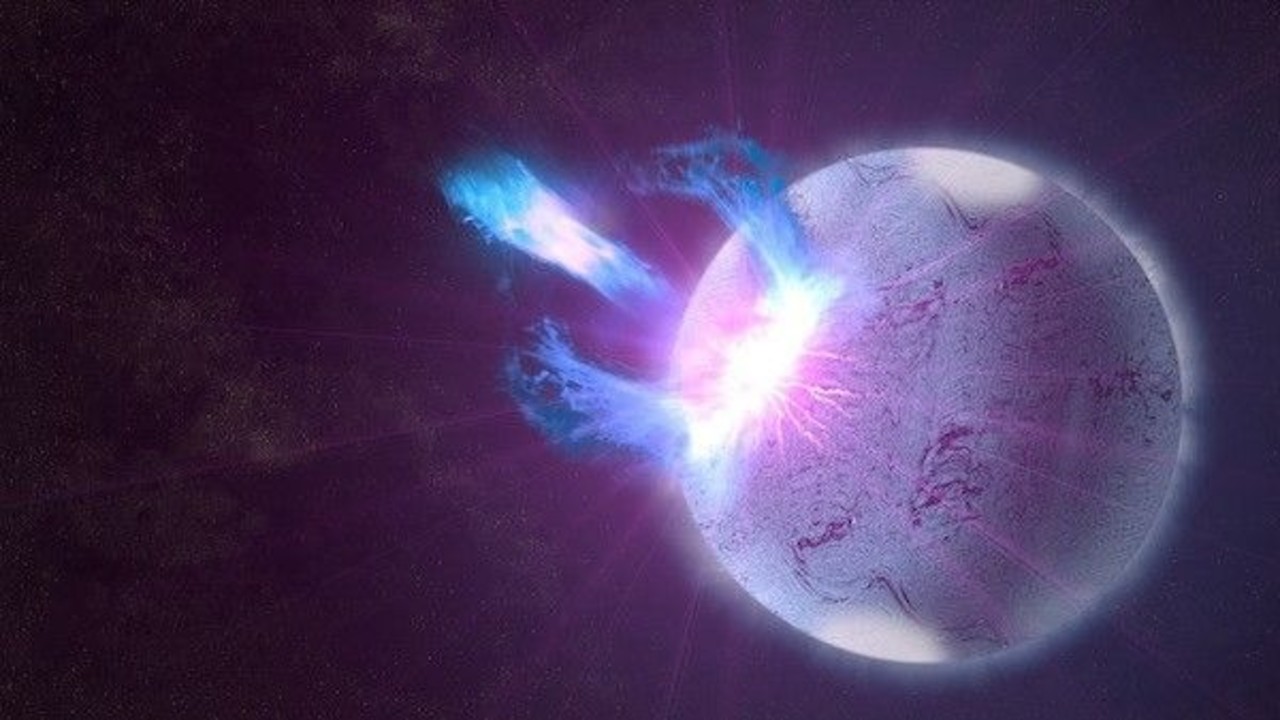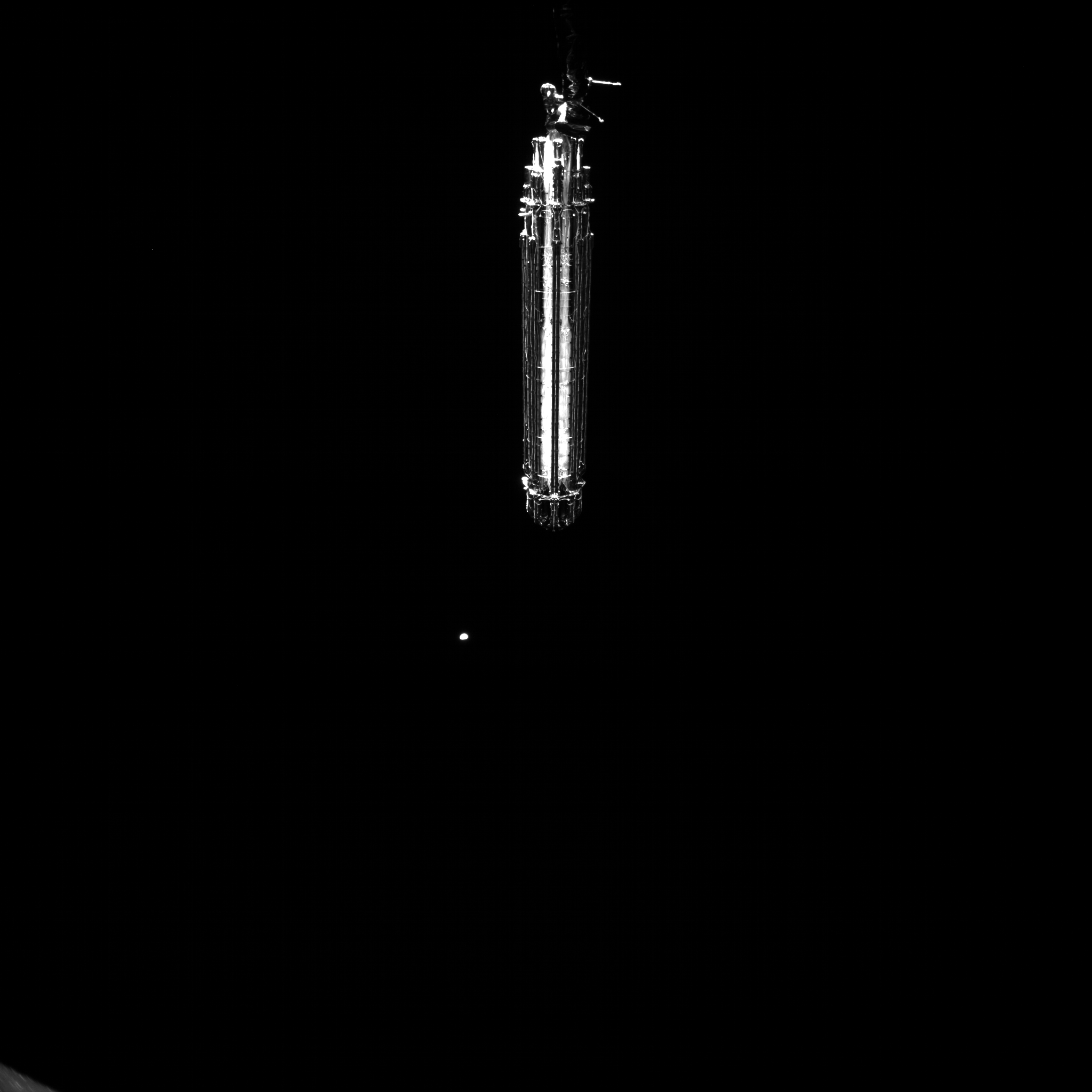Now Reading: Where does the universe’s gold come from? Giant flares from extreme magnetic stars offer a clue
-
01
Where does the universe’s gold come from? Giant flares from extreme magnetic stars offer a clue
Where does the universe’s gold come from? Giant flares from extreme magnetic stars offer a clue


Scientists have finally gathered direct proof of how the universe forges its heaviest elements, a process that has remained a mystery for over half a century.
A team from the Flatiron Institute in New York City calculated that giant flares emitted by magnetars — highly magnetic types of collapsed stars known as neutron stars — could be the long-sought cosmic forge that creates the universe’s heavy elements. Just one of these giant flares could produce a planet’s worth of gold, platinum, and uranium.
“It’s pretty incredible to think that some of the heavy elements all around us, like the precious metals in our phones and computers, are produced in these crazy extreme environments,” Anirudh Patel, a doctoral candidate at Columbia University and lead author on a study of these elements, said in a statement. “Magnetar giant flares could be the solution to a problem we’ve had where there are more heavy elements seen in young galaxies than could be created from neutron star collisions alone.”
Lighter elements such as hydrogen, helium, and lithium were forged in the Big Bang, while heavier ones were formed through nuclear fusion in stellar cores during stars’ lives — or in the aftermath of their explosive deaths. But just how neutron-rich elements that are heavier than iron are made has remained an open question.
These elements are thought to form through a series of nuclear reactions known as the rapid neutron capture process, or r-process, which was long theorized to occur only under extreme conditions such as those in supernovas or neutron star mergers. In 2017, astronomers confirmed the r-process for the first time during the observed merger of two neutron stars.
However, such collisions are so rare that they cannot fully account for the abundance of heavy elements in the universe and neutron star mergers happen too late in the universe’s history to explain the earliest gold and other heavy elements. But the extreme neutron star flares that can forge these elements are much older. “The interesting thing about these giant flares is that they can occur really early in galactic history,” Patel added.
To study these processes, the NYC scientists turned to magnetars, whose magnetic fields are trillions of times stronger than Earth’s. These stars occasionally produce “flares” — bursts of energy caused by the sudden release of magnetic energy, typically triggered by the rearrangement or decay of their magnetic fields.
The team calculated that a magnetar’s giant flare could create the right conditions for r-process elements to form, producing highly unstable radioactive nuclei that decay into stable heavy elements such as gold.
Excitingly, the NYC team was able to link their calculations to a mysterious observation made in 2004 of a bright flash of light from the magnetar SGR 1806–20. Initially, the event didn’t seem unusual — until researchers realized the flare’s total energy was roughly a thousand times greater than that of typical bursts.
“The event had kind of been forgotten over the years,” said Brian Metzger, a senior research scientist at the CCA and a professor at Columbia University. “But we very quickly realized that our model was a perfect fit for it.”
“I wasn’t thinking about anything else for the next week or two,” Patel said in a NASA statement. “It was the only thing on my mind.”
By combining observations of SGR 1806–20’s 2004 flare with their model, Metzger, Patel, and their colleagues estimated that the event likely produced around 2 million billion billion (you read that right) kilograms of heavy elements — roughly the mass of Mars or 27 moons! While such flares could account for about 10% of all heavy elements in our galaxy, the researchers note that the origins of the remaining 90% remain uncertain.
“We can’t exclude that there could be third or fourth sites out there that we just haven’t seen yet,” Metzger said.
RELATED STORIES:
Eager to push their discovery further, the team plans to hunt for more magnetar flares using NASA’s Compton Spectrometer and Imager mission, slated for launch in 2027 — a mission that could reveal even more secrets about the cosmic origins of gold and other heavy elements.
“It’s a pretty fundamental question in terms of the origin of complex matter in the universe,” Patel said. “It’s a fun puzzle that hasn’t actually been solved.”
The team’s research was published in The Astrophysical Journal Letters.
Stay Informed With the Latest & Most Important News
Previous Post
Next Post
-
 012024 in Review: Highlights from NASA in Silicon Valley
012024 in Review: Highlights from NASA in Silicon Valley -
 02Panasonic Leica Summilux DG 15mm f/1.7 ASPH review
02Panasonic Leica Summilux DG 15mm f/1.7 ASPH review -
 03From Polymerization-Enabled Folding and Assembly to Chemical Evolution: Key Processes for Emergence of Functional Polymers in the Origin of Life
03From Polymerization-Enabled Folding and Assembly to Chemical Evolution: Key Processes for Emergence of Functional Polymers in the Origin of Life -
 04How New NASA, India Earth Satellite NISAR Will See Earth
04How New NASA, India Earth Satellite NISAR Will See Earth -
 05And Thus Begins A New Year For Life On Earth
05And Thus Begins A New Year For Life On Earth -
 06Astronomy Activation Ambassadors: A New Era
06Astronomy Activation Ambassadors: A New Era -
07SpaceX launch surge helps set new global launch record in 2024




















